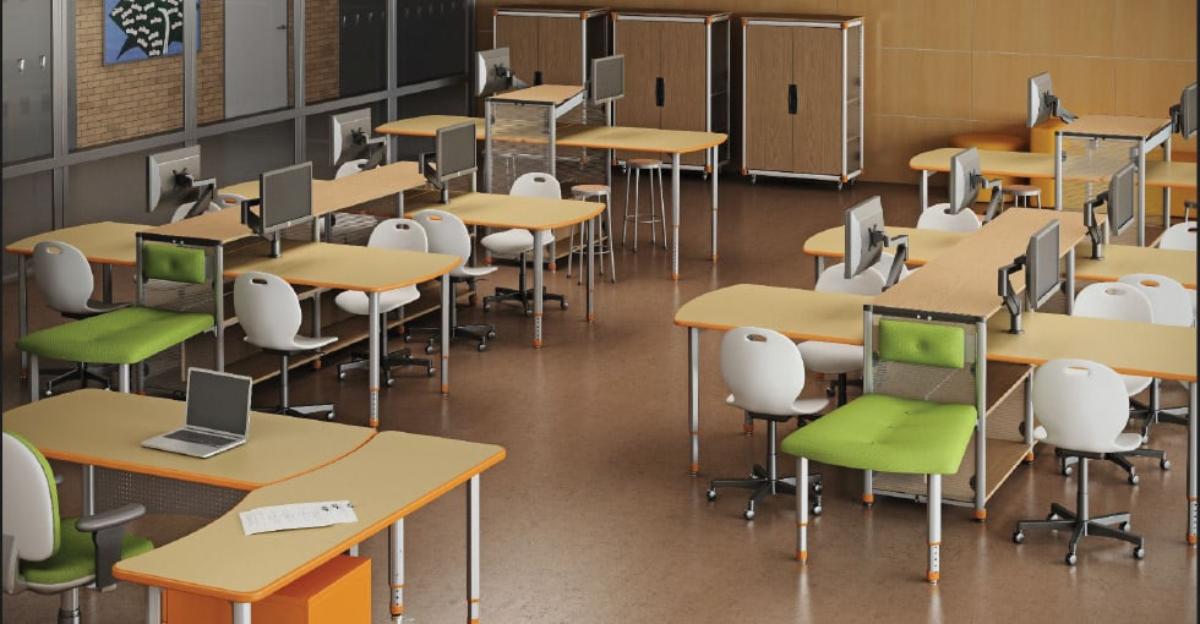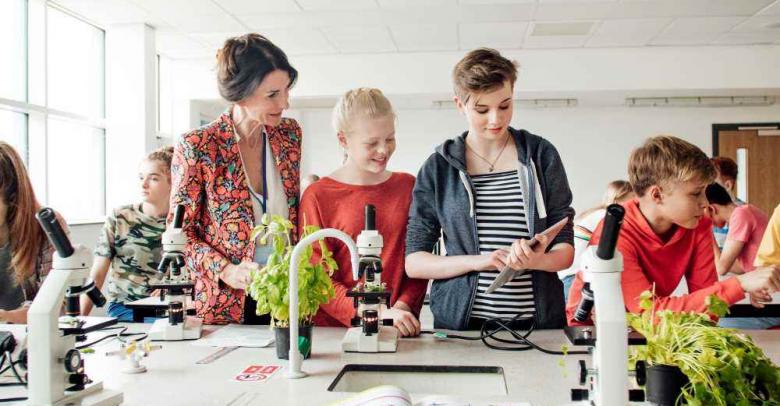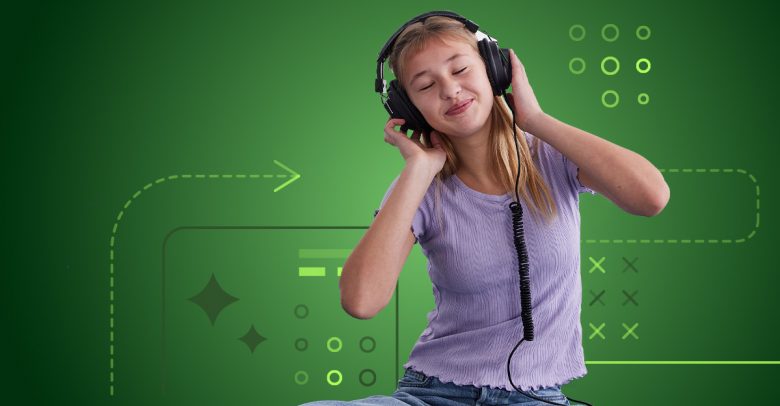It seems as if technology has touched every facet of education—even the concept of homework. That’s where flipped learning comes in.
What is flipped learning?
The concept of “flipping” a classroom starts with students acquiring background knowledge at home through interactive or video presentations, as opposed to sitting in class listening to a lecture.
Having acquired that knowledge, the students now come into class prepared to practice and work with what they learned. This can take the form of collaborative projects, preferably mimicking situations students will find in the “real world”.
Because they no longer have to lecture, teachers are now free to work along with the students and help those who might still be struggling. Proponents of the flipped concept feel this is a much more valuable use of class time.
How does flipping affect the layout of the room?
Well, you can first abandon your ideas of neat rows of desks. That’s an arrangement for lectures and lectures are no longer needed when you’ve flipped your classroom.
Because much of the project-based work will be completed digitally, technology takes the forefront. Areas are provided for students to work collaboratively in “huddle spaces”, complete with power outlets, data ports, and displays that allow everyone to see the work in real time.
The teacher’s domain is now a presentation station with an interactive white board that can be moved around as needed. That way, the teacher can now provide interactive instruction on a group-by-group basis or individually if a student needs differentiated help.
Collaboration is the key
Many flipped classes actually make their in-class practice a whole group affair, meaning that everyone works together in assigned departments toward the common goal. Reflecting that need, seating and tables are all movable and modular.
The goal is to make the classroom look and perform more like the workspaces that will greet the students when they finish school, because the goal of flipping a classroom is to better reflect how students will work in college and career.
Those who have experienced flipped learning say that it has revolutionized their practice and breathed life into the day-to-day monotony that traditional education can sometimes generate. As more courses and easy presentation tools come online, you should see more and more teachers embrace the flipped concept.
Let us help with your next project!
Click here for more information about our furniture and design solutions.






Leave a Reply